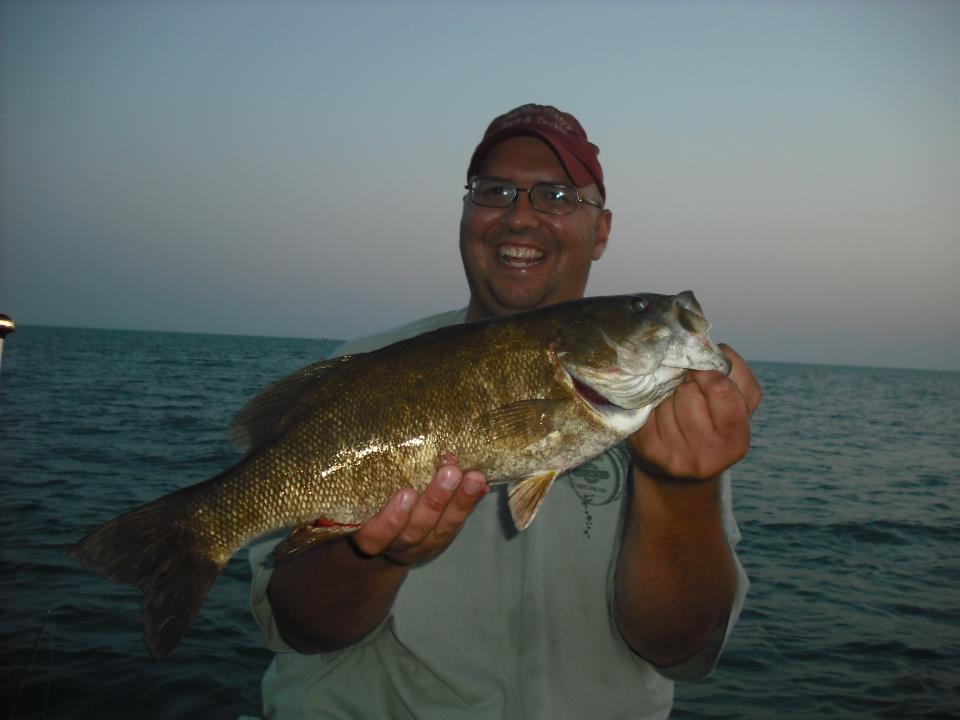Deep Water Smallmouth Lures
 Deep water smallmouth lures are needed in the post spawn period as we move into summer when bronzebacks move deep and suspend in the water column. Smallmouth bass in lakes will typically move into deeper water and will often be found in 15 – 40 feet of water. It can be difficult to reach these bass and get them to strike your offerings. Some bass will move shallow in the early mornings and evenings
Deep water smallmouth lures are needed in the post spawn period as we move into summer when bronzebacks move deep and suspend in the water column. Smallmouth bass in lakes will typically move into deeper water and will often be found in 15 – 40 feet of water. It can be difficult to reach these bass and get them to strike your offerings. Some bass will move shallow in the early mornings and evenings
Al Lindner discusses the transition and where to find smallies before they move deep after spawning.
httpv://youtu.be/mXEg6bNT7bE
Deep Water Smallmouth Lures
Post spawn bass typically are tough to catch. They spend the first two weeks after the spawn recuperating. After that, they start feeding again. Post spawn generally doesn’t happen to an entire lake or at the same time due to differences in water temperature. Use a topwater bait such as a Zara Spook, even if they’re 20 feet deep. Bass will also suspend under floating docks and log booms just after the spawn. Use a jerkbait, then use a jig on the second pass. Original article here
Here are some great deep water smallmouth tips from Mike Iaconelli and an article from bassmaster.
Whether you’re fishing for smallmouth in the North or the South, chances are you are going to find them deep at some point this summer. But exactly how deep is going to differ from place to place. Knowing how to narrow your search will save you a lot of time and help you get more fish to the boat.
What determines how deep the smallmouth are is the depth of their dominant forage. With exception of the spawn, smallmouth always go where their main forage is. On Lake Oneida, that main forage is juvenile yellow perch, about 3-5 inches long. At Champlain, the smallmouth will be eating alewives and on Lake Erie it will be gobies.
When I approach smallmouth water this time of year, I determine what the main forage is and learn as much as I can about that species. I determine where in the water column these baitfish will be. I can then focus my smallmouth-finding efforts on locating places that will hold those species and tailor my bait and equipment selections to suit fishing under
these conditions and at these depths. Learn the most you can about your electronics and use them to look for structure breaks (drops, rises) that hold baitfish, since these fish are a lot like bass and will relate highly to structure and cover. On low-light days, start working the tops of the breaks, but on bluebird days start on the bottom. But let the fish tell you where they are.
The best setup to use when fishing for smallmouth in deeper water is a drop shot rig. I use a drop shot a lot, but especially
in these situations. It keeps the bait up off the bottom and allows me to put it right in front of a smallmouth’s face. Last year on Oneida, I used a pumpkinseed Berkley® Gulp!® Wacky Crawler. It quivers on the fall and I can shake the rod tip and give it the look of an easy-to-catch yellow perch. When we get to Lake Erie, there’s two ways to catch smallmouth that are feeding on gobies. One of my favorite ways is to use a Berkley PowerBait® Power Tube in a color called Camo. I know that the gobies will be in water anywhere from 25-35 feet deep, so I’ll use a 3/8-ounce weight aspirin head jig head. When it comes to imitating an alewife, nothing works as well for me as a drop shot rigged with a Berkley Gulp! Minnow in smelt color. Original article here.
And one more perspective on post spawn, deep water smallmouth fishing.
On big lakes, we drift over deep ridges with worm colored tube jigs. We even shove a piece of real worm inside the tube jig just as an added boost. The action we seem to do best with is one long jig (5 feet up) and as the jig sinks, give it little tiny jigs to give it an agitated motion as it sinks. You can let the tube jig spiral down naturally, which works, but not as well as quick jerks which makes the tube jig look like an injured fish or bug. Original article here
My deep water smallmouth fishing tips:
- Use flourocrabon line except when fishing topwater baits. The flouro will sink and help get the bait down.
- Try topwater baits such as poppers, or Zara spook type baits, especially in the morning or evening. Even if deep, sometimes the smallies can’t resist coming up to nail it.
- Use tubes or other jigs with 1/4 oz or more weight to get the bait down, deep diving crank baits or as Mike Iaconelli says, use a drop shot to get the bait deep but keep it off the bottom. Deep smallies often feed on baitfish. This is also a good time to swim a grub deep.
Some popular deep water smallmouth lures:
Gulp Alive 3″ minnows on a drop shot rig
I hope you found this helpful in your future deep water fishing
Tight lines 🙂 Don’t forget to sign up for our awesome newsletter and comment below!


